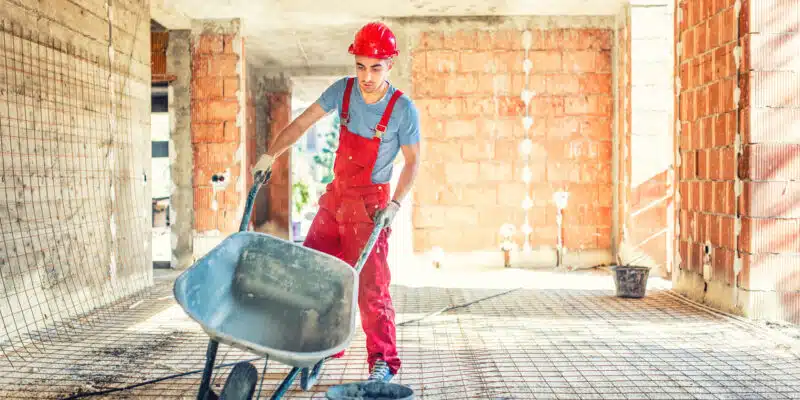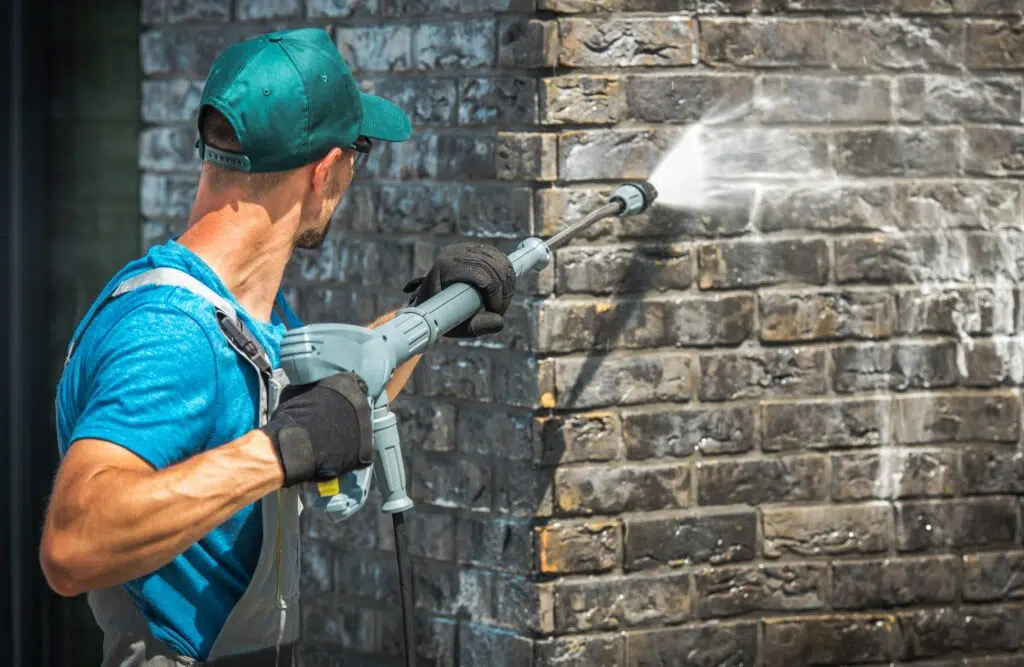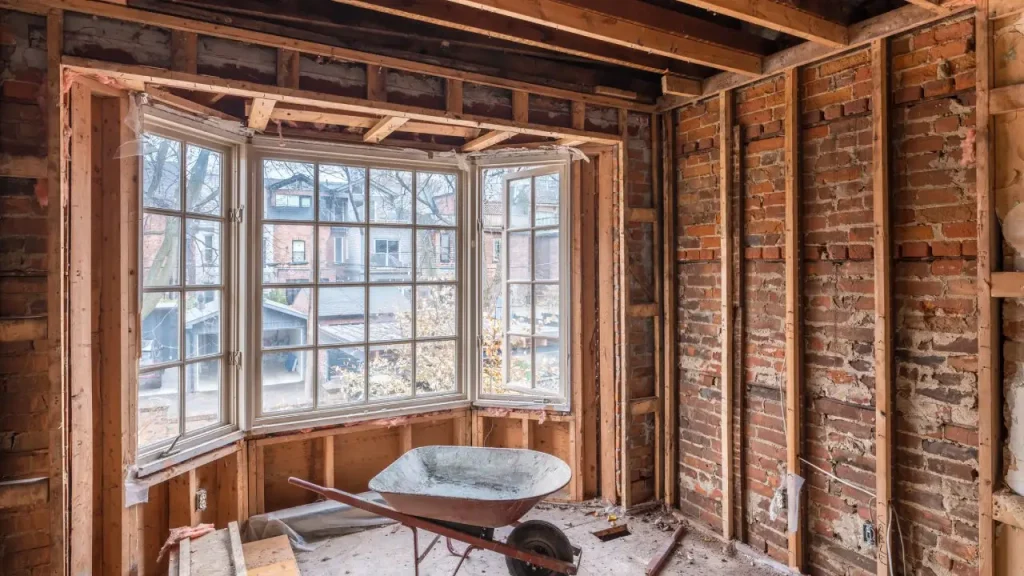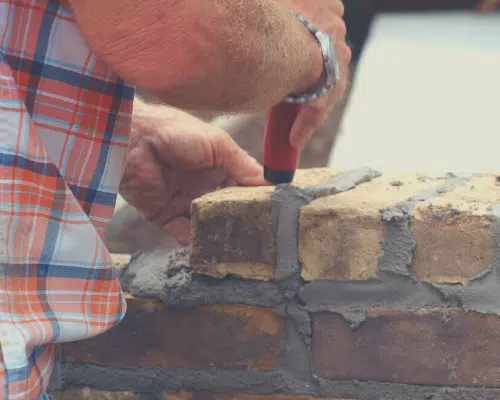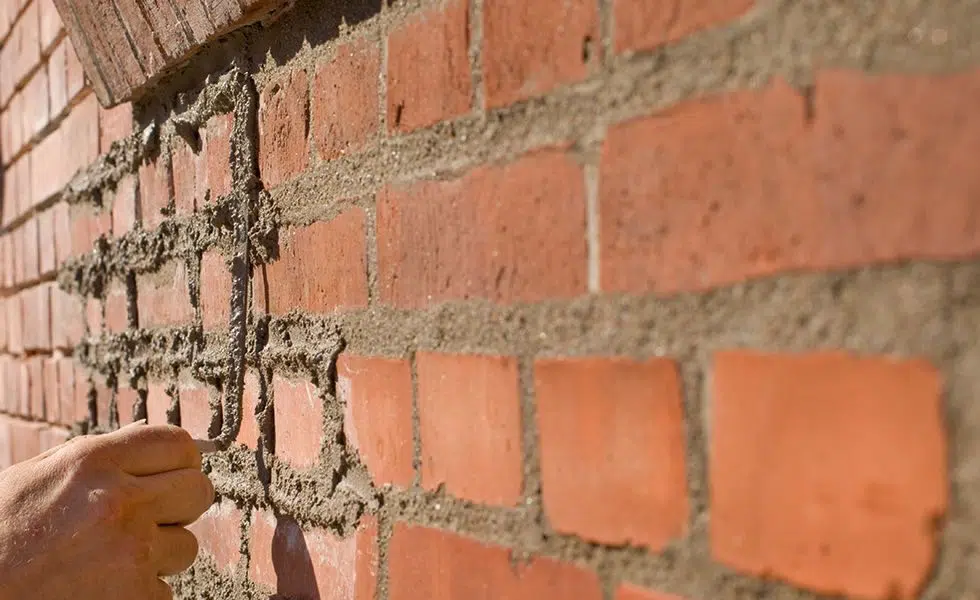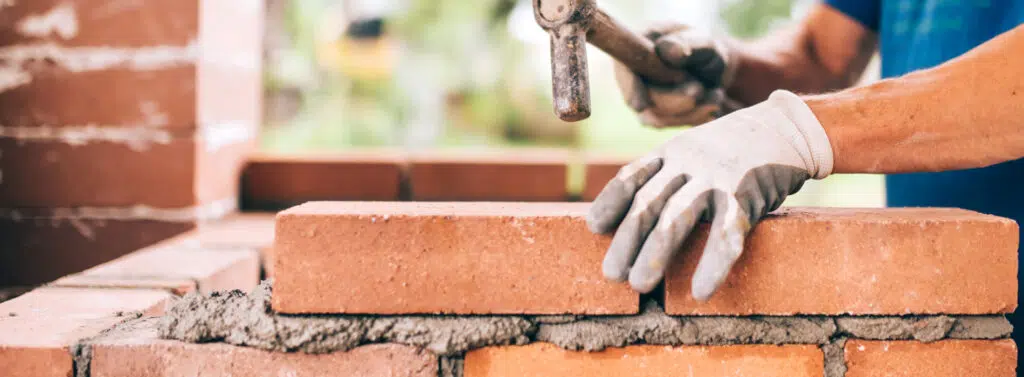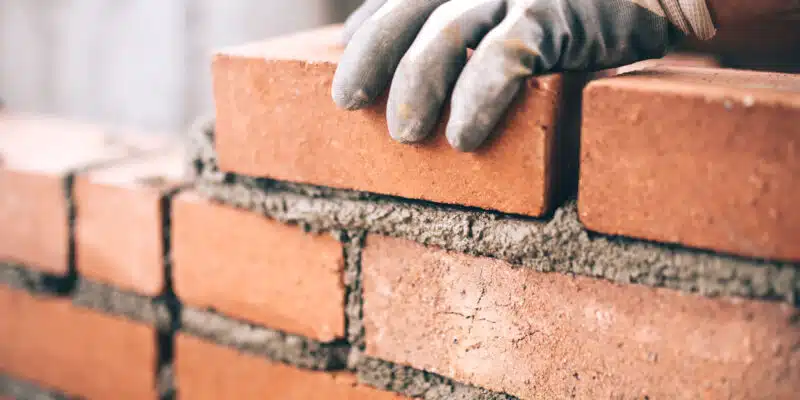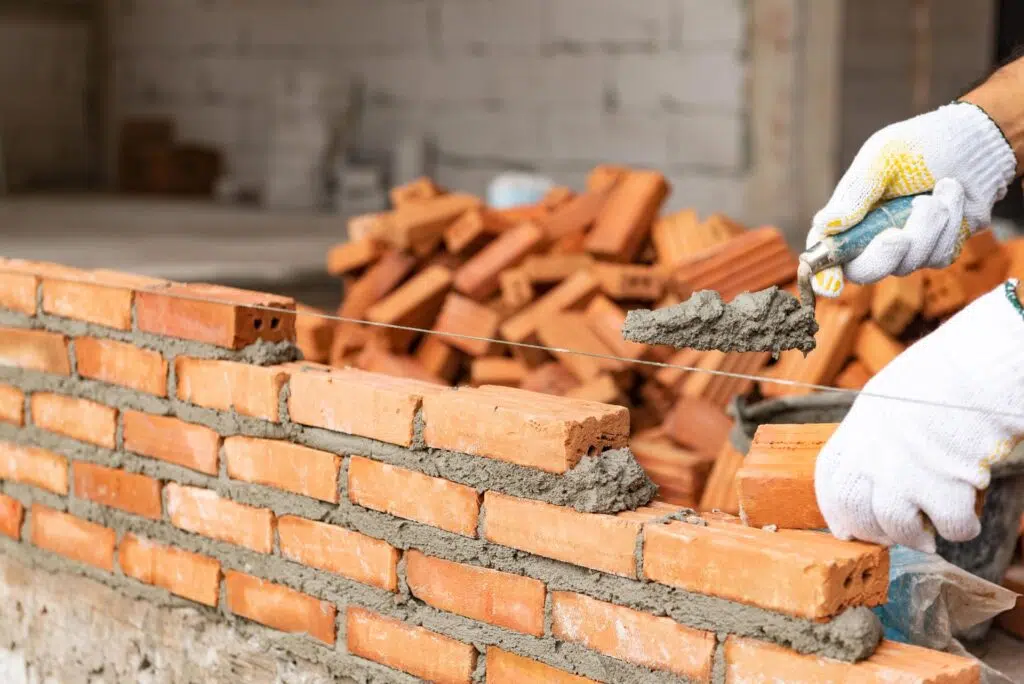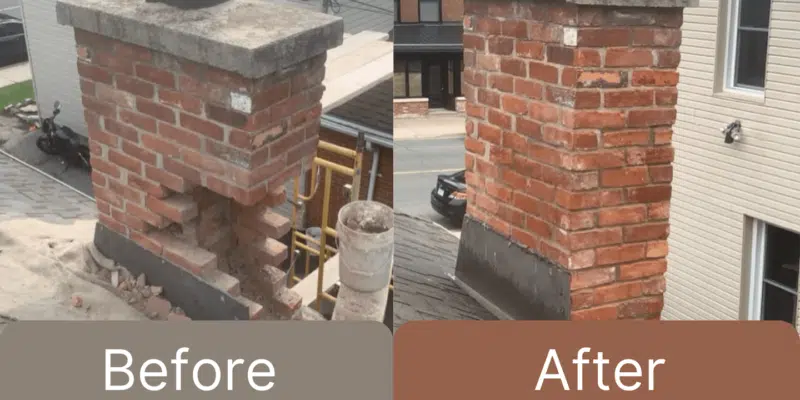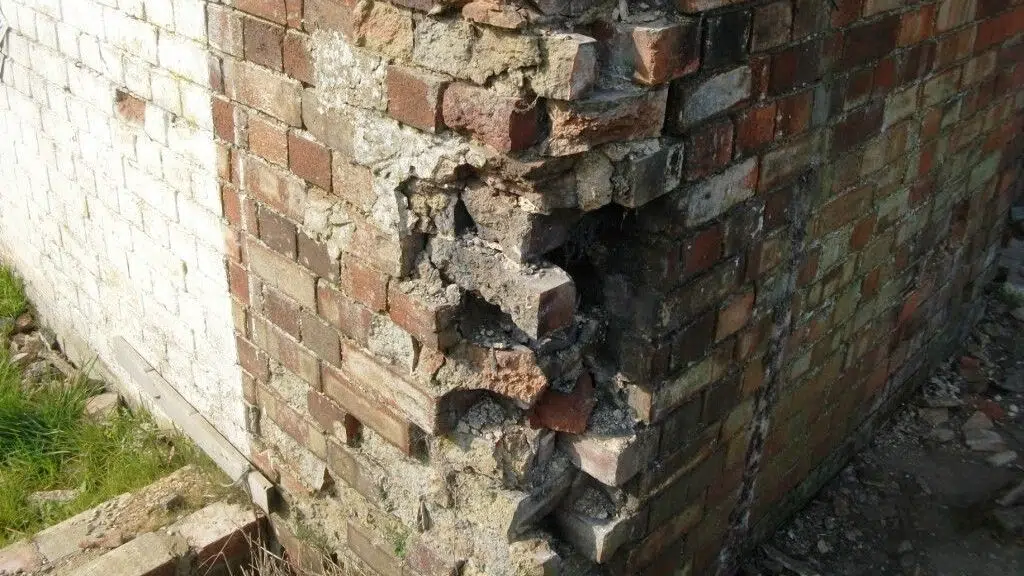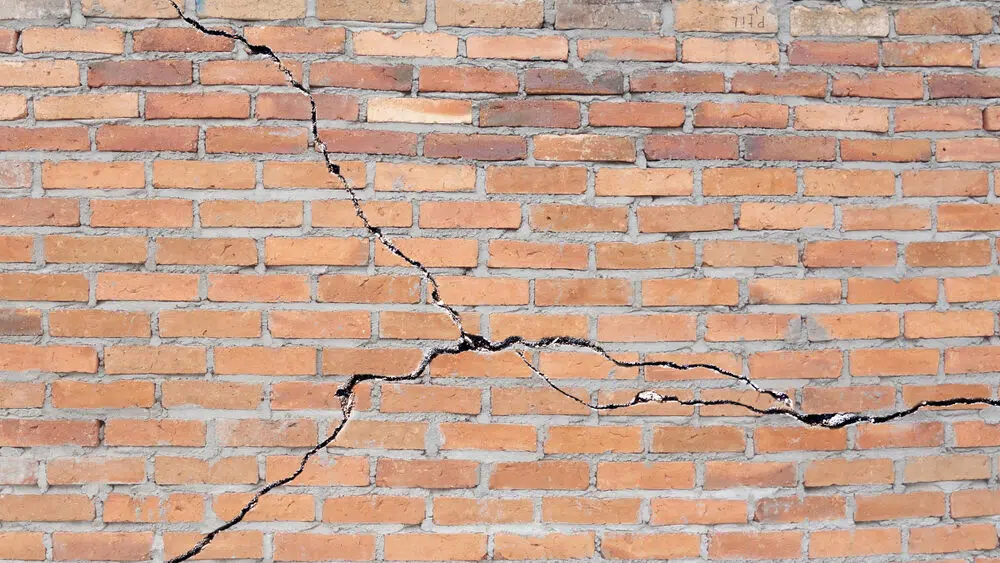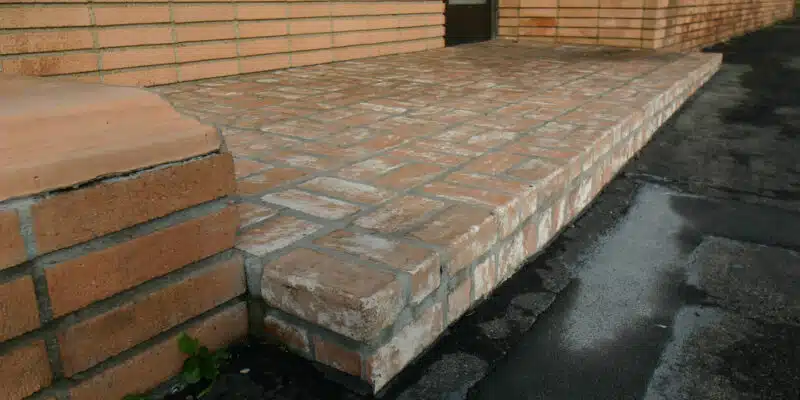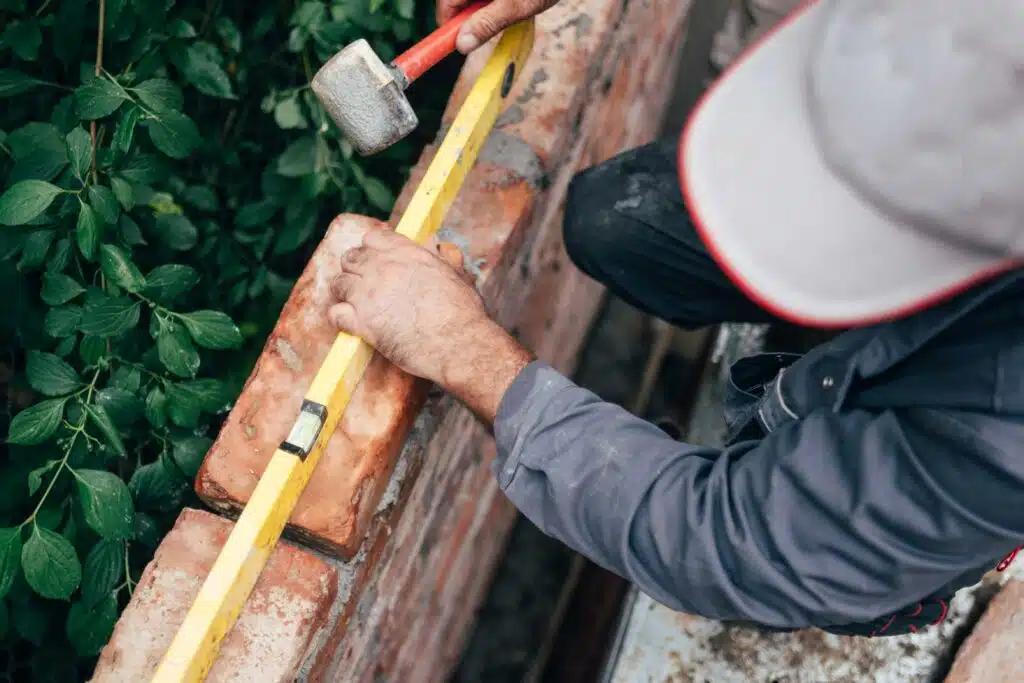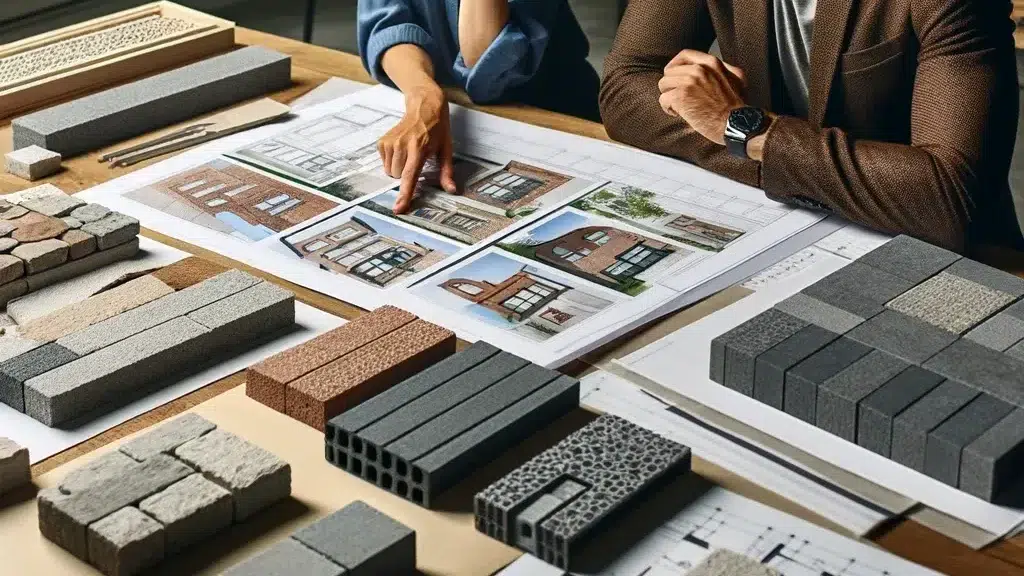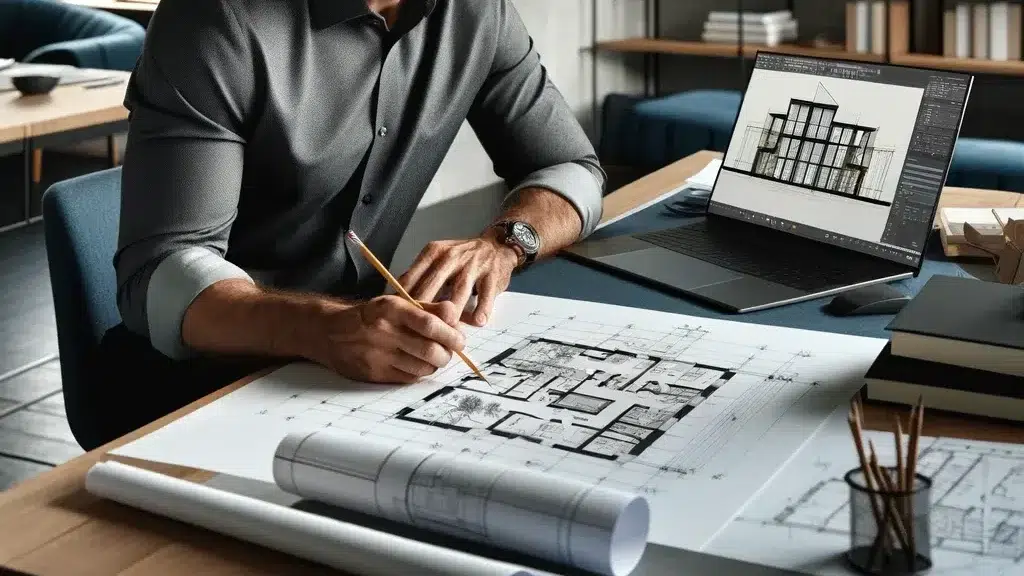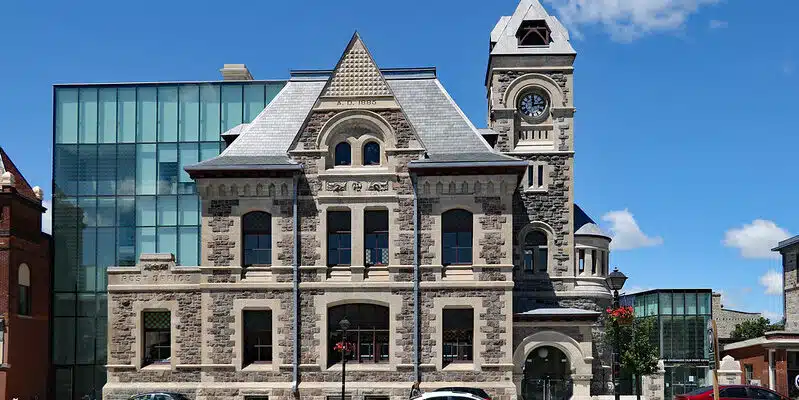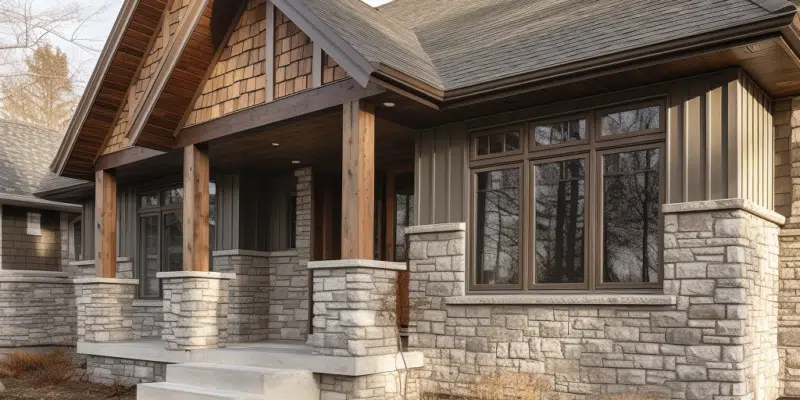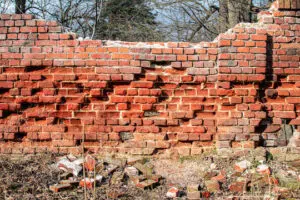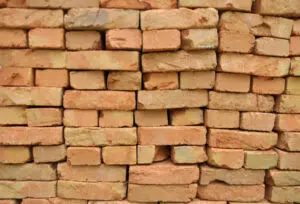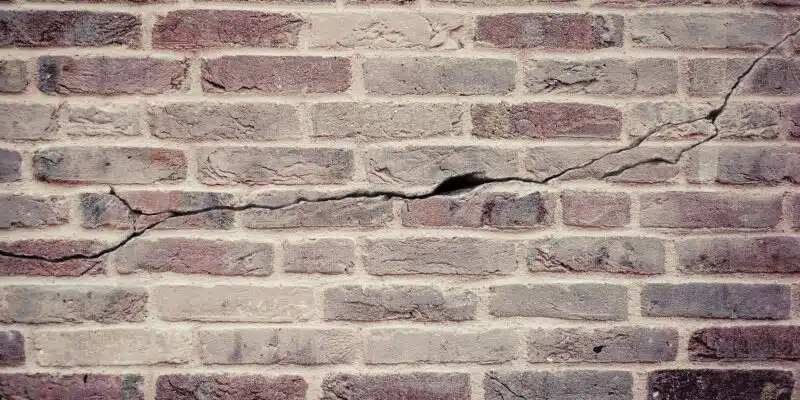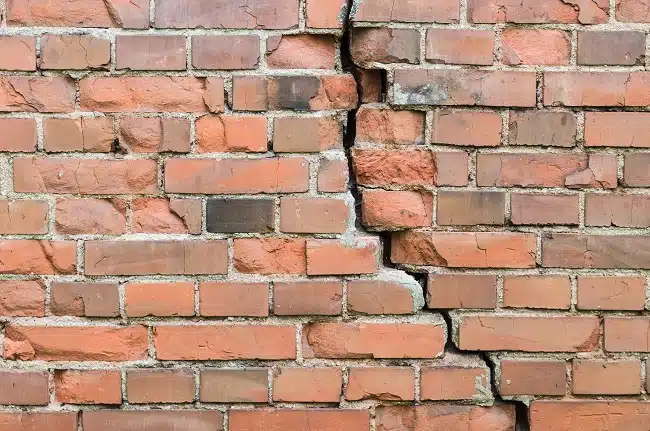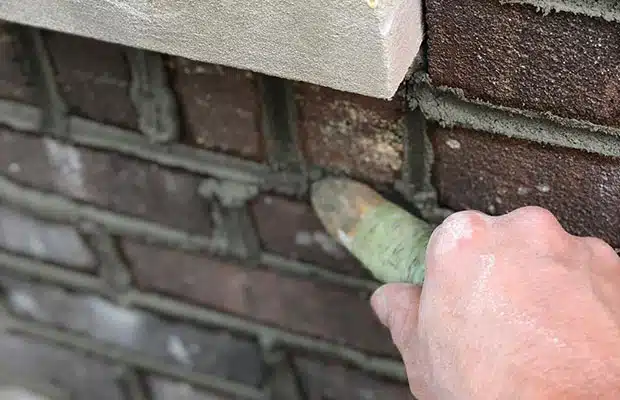Types of Brick Porch Construction
To explore various options for brick porch construction, you can choose among solid brick porch construction, brick veneer porch construction, and combo brick porch construction. Each type has its own benefits and strengths that cater to specific requirements.
Solid Brick Porch Construction
For solid brick construction of porches, careful planning and execution is key. This will ensure the porch withstands different weather and lasts for years. Here is a 3-Step Guide:
- Prepare the Foundation: Dig and level the area. Pour concrete or lay large stones to form a durable base.
- Brick Laying: Start at the corner and work your way across. Use mortar between each row and make sure it is level.
- Finishing Touches: Add steps, railings and other aesthetic features for a beautiful and durable porch.
Solid brick porches are low maintenance and offer value to any property. Plus, they’ve been around since ancient times due to their robustness.[1]
Sources:
[1] Schumann, A., & Stempka, M. (2020). Brick – An Ancient Construction Material That Keeps Its Value Until Today. KGK-Kautschuk Gummi Kunststoffe, 73(12), 40-44.
For an extra touch of class, why not opt for a solid brick construction porch? It’s the perfect way to show off your butler!
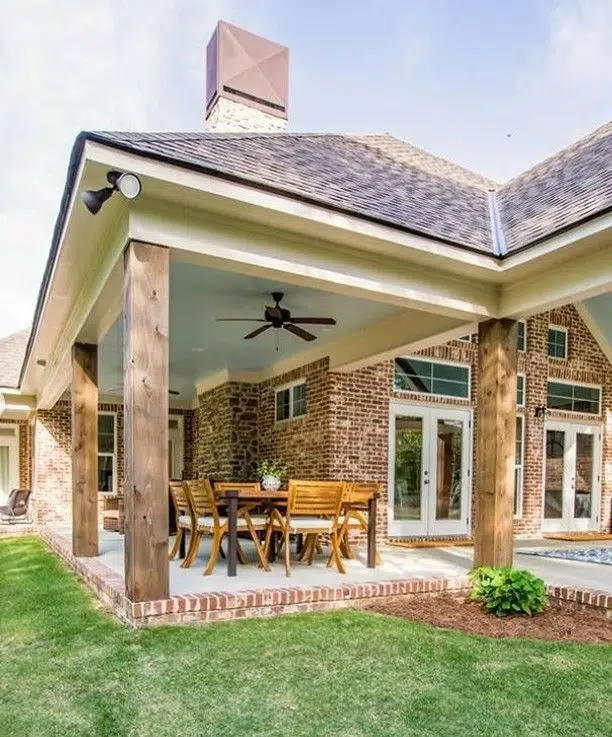
Brick Veneer Porch Construction
Enhance your porch with Brick Veneer! Here’s how:
- Prep & clean the porch’s surface.
- Add metal lath for support.
- Spread scratch coat mortar over the lath.
- Add brick veneer with setting bed mortar.
- Seal & finish with grout or pointing mortar.
- Clean up any excess debris.
You can get creative too! Make sure each brick is aligned & level for best results. Pro Tip: Stock up on supplies like bricks, adhesive, sealer, & pointing materials. Why not combine different types of brick to make your porch unique?
Combo Brick Porch Construction
For building a porch using a combo of bricks, there are several steps that help ensure stability and durability. The steps are as follows:
- Excavate and prep the site for the foundation.
- Lay and level the foundation with concrete.
- Erect pillars/posts to hold the roof.
- Brick walls around the pillars/posts, leaving openings for windows/doors.
- Mount a roofing system onto the pillars/posts to finish.
It’s key to make sure the whole structure is strong and balanced enough to handle different weather conditions, and it adds value to the property. Owners have the chance to test different designs and use different types of bricks available on the market.
Pro Tip: Talk to an engineer/architect to ensure safety standards and building codes are followed before beginning the project.
Choosing a brick porch construction is like choosing between a secure relationship and a short-term fling – each has its pros and cons.
Advantages and Disadvantages of Each Type
To compare the different brick porch construction types and help homeowners with masonry expertise make an informed decision, discuss the advantages and disadvantages of each type. We will take a closer look at solid brick porch construction, brick veneer porch construction, and combo brick porch construction for a comprehensive understanding of their respective usage and suitability.
Solid Brick Porch Construction
Solid Bricks are a sturdy option for porch construction and have been used for decades. However, they come with their own benefits and drawbacks.
Here’s a 5-Step Guide to construct a Solid Brick Porch:
- Design – Draw up the layout plan of your porch, taking measurements and steps to ensure you have the right materials.
- Excavate – Dig up the area for your porch, making sure the soil is flat and levelled.
- Gravel – Pour in gravel four inches thick, then place steel mesh and pour concrete.
- Lay Bricks – Best to hire someone experienced in installing bricks. Ensure they apply mortar to each brick’s side before pressing them into place.
- Finish Up – After all bricks are in place, apply two coats of sealer to prevent moisture damage.
Solid Bricks provide durability, though they may need additional maintenance as years go by. Over time, tuck-pointing or replacement may be needed due to weather elements.
Colonial times saw porches as a staple, often made of wood due to their lower cost. Why not have a brick veneer porch and feel like royalty while sitting on your throne?
Brick Veneer Porch Construction
Brick veneer construction uses bricks as an outer wall. Benefits include durability and beauty. But there are also cons to consider. Here’s a step-by-step guide:
- Plan out the porch design and location, ensuring it meets local codes.
- Set footers at each post.
- Build the wooden frame and roof according to plans.
- Apply a water-resistant barrier before laying the brick veneer.
- Mortar joints between bricks add strength.
Weight-bearing capability may be limited compared to other types of porches.
Pro Tip: Consult with experts in bricklaying and architecture first for successful brick veneer porch construction. Why settle for a brick porch when you can have the combo?
Combo Brick Porch Construction
Constructing a porch with a mix of brick and other materials? It’s called Mixed Material Porch Construction, and has advantages and drawbacks. Here’s our 4-step guide:
- Lay the foundation with concrete or stone.
- Frame it with wood, metal, or vinyl.
- Add brick veneer to the sides and front.
- Put in railings and lights.
Durability is a plus, but it’s pricier than other options. To stay cost-effective, use alternative materials that look like brick. Hire an experienced contractor, too, to avoid costly delays.
Mixing materials for a porch can be beneficial. Just remember to follow the steps and keep costs in check!
Factors to Consider
To effectively plan brick porch construction with different types suitable for your house, you need to consider three significant factors: climate, budget, and aesthetics. Weather adjustment is crucial to preventing premature damage, which relates to costs as well. Additionally, the style and design you choose can impact curb appeal.
Climate and Weather Conditions
The climate and atmospheric conditions of a place depend hugely on its location. Relative factors like temperature, humidity, rainfall and wind can differ widely in different areas. Specific phenomena like El Niño and La Niña can also have a great effect, leading to extremes such as heatwaves, heavy rains, etc.
To make the right decisions about living, working or investing in a region, it is wise to understand the historical data of its climate. This will give an idea of the seasonal variations in temperature, rainfall, etc. Moreover, modern weather-forecasting systems can provide short-term predictions which help with outdoor activities or harvest season decisions.
Climate Change has caused major shifts in world weather patterns. Climatologists predict more extreme events such as floods, hurricanes, fires, droughts, etc., due to global warming. Therefore, both public and private entities should take proactive measures to face these events. NASA’s Earth Observatory records show that 2016 was the warmest year since 1880, showing how much Climate Change is impacting us.
Budget and Cost
When it comes to finances, one must consider both money and budgeting. Let’s take a look at the important elements of Budget and Cost.
- Fixed Costs stay the same regardless of sales or production volume.
- Variable Costs, on the other hand, change with production or sales activity.
- Budget Constraints are the financial limits within which decisions must be made- ensuring efficiency and maximum revenue.
It is also essential to monitor indirect costs. To make wise choices, assess each expense against the company’s return on investment. Studies show that good planning and decision-making based on budget analysis can result in better growth, higher profits, and a competitive edge.
Deloitte’s 2020 CFO Signals Survey reveals that 70% of CFOs plan on increasing capital expenditure due to higher demand for products and services. Therefore, it is necessary to have a clear understanding of budget restrictions and cost control techniques when making financial decisions.
Aesthetic Preferences
Design Significance is an important factor when it comes to appealing design. It affects user experience, engagement and usability. Here’s a list of factors to consider when designing a website:
- Color scheme – Appropriate color usage impacts users’ moods and attention.
- Typography – Legible typefaces that fit the site’s style.
- Layout – A structure that results in a coherent flow.
- Media – Videos, images and icons to supplement text content.
- Spacing – Using white space to avoid cognitive overload.
When designing a website, accessibility, performance and scalability must also be taken into account. A few tips to consider when creating aesthetically pleasing web designs:
- Strategic color contrast
- Consistent typography
- Minimizing disruptions with white space
- Ensure readability isn’t hindered
- Typeface symbols should look uniform across devices
- Brand recognition with returning customers
- Keep elements legible across different platforms
- Ample white space to discourage information clutter.
Remember, to get the best results, you need the right materials!
When to Use Each Type of Construction
To determine which type of brick porch construction is right for your needs, turn to the section “When to Use Each Type of Construction” in the article on “Different Types of Brick Porch Construction and When to Use Them.” The sub-sections, including Solid Brick Porch Construction, Brick Veneer Porch Construction, and Combo Brick Porch Construction, provide recommended usages for each construction type.
Solid Brick Porch Construction – Recommended for…
Solid brick construction is the perfect option for porches. It gives you durability, strength, and classic style. There are many benefits.
- A sturdy foundation with concrete footing or piles.
- High-quality bricks and mortar to build the brickwork.
- Shingles or tiles for roofing.
- Finishes like paint or render.
Solid brick porches resist fire and pests. They’re durable and low maintenance. Plus, they increase your property value and lower insurance costs. Pro tip: Ventilate the porch area to avoid heat buildup in summer. Building a brick veneer porch? It looks nice, but it’s still a pig!
Brick Veneer Porch Construction – Recommended for…
Constructing a Brick Veneer Porch is a great choice for those seeking durability and the look of a full brick build without the extra weight. Here’s a step-by-step guide to do it:
- Plan & Design your Porch.
- Dig the Site.
- Install the Foundation.
- Add a Moisture Barrier.
- Create Structural Framing.
- Install the Brick Veneer.
Brick Veneer also provides insulation and is resistant to fire, making it a smart pick for areas with extreme heat or that are prone to wildfires. When it comes to porch building, brick veneer is a great option.
Pro Tip: Make sure to hire an experienced contractor who knows all about brick veneer porch construction for the best results and to stay safe.
Combo Brick Porch Construction – Perfect for those wanting a tough entrance, and to deter any would-be burglars with a build that says ‘don’t mess with me’.
Combo Brick Porch Construction – Recommended for…
Combining brick with another material is a great option for porch construction. It has amazing durability and can handle different weathers, making it the perfect choice for outdoor spaces.
- Choose the Right Material to Complement Brick – Consider concrete, wood or stone that will go well with the brick.
- Plan and Execute Carefully – Combining materials needs careful planning and execution. It’s best to hire a professional contractor.
- Keep the Aesthetic Look Consistent – All elements must look like they belong together in terms of design and color.
It’s worth noting that combining brick with another material often costs more than using one material alone. However, it increases the value of your property and gives you a comfortable outdoor space to relax and entertain.
My family chose a brick-and-another-material porch after our home renovation two years ago. When summer came, we had a pleasant spot to hang out with friends and family while enjoying the outdoors. The robustness also meant it could withstand severe winter conditions, making maintenance much easier.
Maintenance and Repair
To ensure your brick porch construction lasts as long as possible, it’s important to keep up with maintenance and repair. With this in mind, we’ll explore the best ways to maintain and repair your porch in this section titled Maintenance and Repair. We’ll cover some general tips that can be applied to any type of construction, as well as specific maintenance and repair advice for each type of brick porch construction.
General Tips for Maintenance and Repair
It’s essential to keep your items in great shape. Here’s how:
- Clean and inspect them often for any damage.
- Store them correctly – away from high/low temperatures or humidity.
- If something breaks, attempt DIY repair before you call a pro.
Also, some repairs may need special tools or know-how. In such cases, expert help is the best way to go.
Plus, keeping up with maintenance can save you cash and increase the life of your things.
A great idea: Put reminders on your calendar or phone to remember regular maintenance. It’s important to look after your home – don’t leave it too long or it’ll cost you more to fix than if you had kept up with it.
Maintenance for Each Type of Construction
To keep constructions in good shape, maintenance is a must. Making a custom plan based on the type of construction is a must for longevity. Create a table to make sure no maintenance is overlooked.
For residential homes, regular roof and siding check-ups are important to stop leaks and weather damage. Commercial buildings need more frequent maintenance, like HVAC system inspections.
Make sure routine repairs follow industry standards and local codes. Training staff for maintenance can help to spot problems quicker.
We suggest addressing issues right away; this prevents them from becoming bigger, time-consuming, and money-costing repairs.
Bottom line: no matter what kind of construction – we’ve got the repairs covered!
The following table summarizes the maintenance requirements for different types of construction:
| Type of Construction | Recommended Maintenance |
|---|---|
| Residential Homes | Regular roof and siding check-ups to stop leaks and weather damage |
| Commercial Buildings | More frequent maintenance, like HVAC system inspections |
Repair for Each Type of Construction
Different Repair Techniques for Various Constructions
Repairs of constructions vary depending on the structure. The repair method changes depending on the materials used. Here are listed some methods for each type of construction.
For easy understanding, this info is displayed in a table:
| Type of Construction | Repair Method |
|---|---|
| Wooden Buildings | Replacing bad wood |
| Concrete Buildings | Patches / Finishers |
| Steel Buildings | Welding Cracks / Adding Steel |
| Brick Buildings | Patchwork / Pointing |
Each repair needs special skills and care for long-lasting results.
Also, a few tips to prevent harm to all types of buildings:
- Regular Maintenance: Checks before, during, and after seasons stop long-term damage.
- Proper Material Usage: Materials used in normal conditions may not be suitable for extreme weather or residue-inducing environments.
- Timely Repairs: Quickly detect and fix faults to reduce further harm.
Using these tips will help extend the life of any building structure.
Frequently Asked Questions
- What are the different types of brick porch construction?
- There are several types of brick porch constructions, such as solid brick porch, brick veneer porch, and thin brick porch.
- How can I determine the type of brick porch construction to use?
- The type of brick porch construction to use will depend on various factors such as the intended use of the porch, budget, and the style of the home.
- What is a solid brick porch?
- A solid brick porch is a porch that is constructed entirely from bricks with no void space in between.
- What is a brick veneer porch?
- A brick veneer porch is a porch that comprises an inner structure usually made from concrete or wood and a brick exterior that covers the structure.
- What is a thin brick porch?
- A thin brick porch is a porch that is constructed using thin bricks, usually about half-inch thick. These bricks are attached to an existing surface to give the appearance of a brick porch.
- Can I change the type of brick porch construction already in place?
- Yes, you can change the type of brick porch construction already in place, but this will depend on the current structure, budget, and the type of construction you want to use instead. It is advisable to consult a masonry expert for professional advice.

